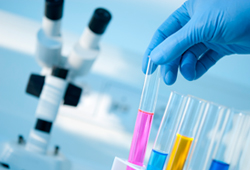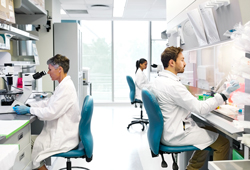FDA Announces Total Product Life Cycle Advisory Program (TAP) Pilot
 The U.S. Food and Drug Administration’s (“FDA” or “the Agency”) Center for Devices and Radiological Health (“CDRH”) recently announced the launch of its Total Product Life Cycle Advisory Program (“TAP”) Pilot. The first phase of this voluntary initiative, called TAP Pilot Soft Launch, will be conducted during fiscal year (“FY”) 2023 with enrollment beginning on January 1, 2023.
The U.S. Food and Drug Administration’s (“FDA” or “the Agency”) Center for Devices and Radiological Health (“CDRH”) recently announced the launch of its Total Product Life Cycle Advisory Program (“TAP”) Pilot. The first phase of this voluntary initiative, called TAP Pilot Soft Launch, will be conducted during fiscal year (“FY”) 2023 with enrollment beginning on January 1, 2023.
The Agency committed to establishing the TAP Pilot as part of the MDUFA V reauthorization, and the Agency’s long-term vision for TAP is “to help spur more rapid development and more rapid and widespread patient access to safe, effective, high-quality medical devices of public health importance.” As part of the TAP Pilot, the FDA will provide strategic engagement for such devices by:
- Improving participants’ experiences with the FDA by providing for more timely premarket interactions
- Enhancing the experience of all participants throughout the device development and review process, including FDA staff
- Facilitating improved strategic decision-making during device development, including earlier identification, assessment, and mitigation of device development risk
- Facilitating regular and solutions-focused engagement early in device development between FDA review teams, participants, and other stakeholders, such as patients, providers, and payers
- Collaborating to better align expectations regarding evidence generation, improve submission quality, and improve the efficiency of the premarket review process
Read client alert here.
 On September 28, 2022, the U.S. Food and Drug Administration (“FDA” or “the Agency”) issued its long-awaited final guidance, “Clinical Decision Support Software” (the “CDS Guidance”). The CDS Guidance follows the Agency’s September 2019 draft guidance of the same name (the “Draft Guidance”) and seeks to clarify several key concepts for determining whether clinical decision support (“CDS”) software is a medical device.
On September 28, 2022, the U.S. Food and Drug Administration (“FDA” or “the Agency”) issued its long-awaited final guidance, “Clinical Decision Support Software” (the “CDS Guidance”). The CDS Guidance follows the Agency’s September 2019 draft guidance of the same name (the “Draft Guidance”) and seeks to clarify several key concepts for determining whether clinical decision support (“CDS”) software is a medical device. On July 28, 2022, the U.S. Food and Drug Administration (FDA) will hold a public advisory committee meeting to discuss skin lesion analyzer (SLA) technology and its application to detecting skin cancers in various patient care settings. This meeting of the General and Plastic Surgery Devices Panel of the Medical Devices Advisory Committee will focus on algorithm-based SLA devices for adjunctive detection of skin lesions, including skin cancers, and stands to provide industry another layer of thinking on FDA’s perspective on artificial intelligence and machine learning (AI/ML) device technologies.
On July 28, 2022, the U.S. Food and Drug Administration (FDA) will hold a public advisory committee meeting to discuss skin lesion analyzer (SLA) technology and its application to detecting skin cancers in various patient care settings. This meeting of the General and Plastic Surgery Devices Panel of the Medical Devices Advisory Committee will focus on algorithm-based SLA devices for adjunctive detection of skin lesions, including skin cancers, and stands to provide industry another layer of thinking on FDA’s perspective on artificial intelligence and machine learning (AI/ML) device technologies. Given that artificial intelligence (AI) – historically the domain of software companies – is a new frontier for many life sciences companies, we have assembled five helpful tips to consider for protecting AI technologies:
Given that artificial intelligence (AI) – historically the domain of software companies – is a new frontier for many life sciences companies, we have assembled five helpful tips to consider for protecting AI technologies: The UK Government has announced a new fund that provides financing to UK start-ups and scale-ups in the form of a convertible loan which is invested directly by the Government. For further detail on the fund please see: https://www.gov.uk/guidance/future-fund.
The UK Government has announced a new fund that provides financing to UK start-ups and scale-ups in the form of a convertible loan which is invested directly by the Government. For further detail on the fund please see: https://www.gov.uk/guidance/future-fund. In response to the COVID-19 pandemic, the U.S. and many state governments have taken a number of steps to expand access to telehealth services and reduce other barriers to care. Among other things, the U.S. Centers for Medicare and Medicaid Services (CMS) has eliminated a number of restrictions on the coverage of telehealth services under Medicare to enable coverage of services provided to patients, including new patients, located in their homes. Many commercial payors have also taken action to expand access to telehealth, including by eliminating co-payments for such services. Many states have temporarily waived in-state licensure requirements to enable physicians, registered nurses, licensed practical nurses, nurse practitioners, and other medical personnel licensed in any state to provide telehealth services to their residents. The Department of Health and Human Services (HHS), Office of Inspector General (OIG) announced that physicians and other practitioners will not be subject to administrative sanctions for reducing or waiving any cost-sharing obligations Federal health care program beneficiaries may owe for telehealth services. The HHS Office for Civil Rights (OCR) additionally announced that during the pandemic, it will allow healthcare providers to provide telehealth services to patients through any non-public facing communication applications such as Apple FaceTime, Facebook Messenger, Google Hangout, and Skype. Finally, the Drug Enforcement Administration (DEA) and the Food and Drug Administration (FDA) have both taken steps in response to the COVID-19 pandemic to remove barriers restricting patient access to controlled substances and medicines. We review these developments below.
In response to the COVID-19 pandemic, the U.S. and many state governments have taken a number of steps to expand access to telehealth services and reduce other barriers to care. Among other things, the U.S. Centers for Medicare and Medicaid Services (CMS) has eliminated a number of restrictions on the coverage of telehealth services under Medicare to enable coverage of services provided to patients, including new patients, located in their homes. Many commercial payors have also taken action to expand access to telehealth, including by eliminating co-payments for such services. Many states have temporarily waived in-state licensure requirements to enable physicians, registered nurses, licensed practical nurses, nurse practitioners, and other medical personnel licensed in any state to provide telehealth services to their residents. The Department of Health and Human Services (HHS), Office of Inspector General (OIG) announced that physicians and other practitioners will not be subject to administrative sanctions for reducing or waiving any cost-sharing obligations Federal health care program beneficiaries may owe for telehealth services. The HHS Office for Civil Rights (OCR) additionally announced that during the pandemic, it will allow healthcare providers to provide telehealth services to patients through any non-public facing communication applications such as Apple FaceTime, Facebook Messenger, Google Hangout, and Skype. Finally, the Drug Enforcement Administration (DEA) and the Food and Drug Administration (FDA) have both taken steps in response to the COVID-19 pandemic to remove barriers restricting patient access to controlled substances and medicines. We review these developments below. The 2019 novel coronavirus (coined COVID-19 by the World Health Organization) is the latest in a series of public health emergencies in recent years to challenge product developers in the life sciences community. With every challenge comes an opportunity, in this case to leverage product development plans and technologies to be first-to-market with products useful in remediating some aspect of COVID-19 and its spread. Earlier this year, the U.S. Food and Drug Administration (FDA) announced its commitment to extend all available resources to help expedite the development and availability of medical countermeasures (MCMs) to prevent, treat, or diagnose COVID-19 and, in fact, issued the first emergency use authorization (EUA) shortly thereafter. For life sciences companies exploring potential opportunities to leverage their programs to help treat, detect, or address some aspect of COVID-19, a number of regulatory mechanisms may be available to facilitate and advance product development plans.
The 2019 novel coronavirus (coined COVID-19 by the World Health Organization) is the latest in a series of public health emergencies in recent years to challenge product developers in the life sciences community. With every challenge comes an opportunity, in this case to leverage product development plans and technologies to be first-to-market with products useful in remediating some aspect of COVID-19 and its spread. Earlier this year, the U.S. Food and Drug Administration (FDA) announced its commitment to extend all available resources to help expedite the development and availability of medical countermeasures (MCMs) to prevent, treat, or diagnose COVID-19 and, in fact, issued the first emergency use authorization (EUA) shortly thereafter. For life sciences companies exploring potential opportunities to leverage their programs to help treat, detect, or address some aspect of COVID-19, a number of regulatory mechanisms may be available to facilitate and advance product development plans.